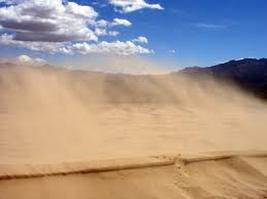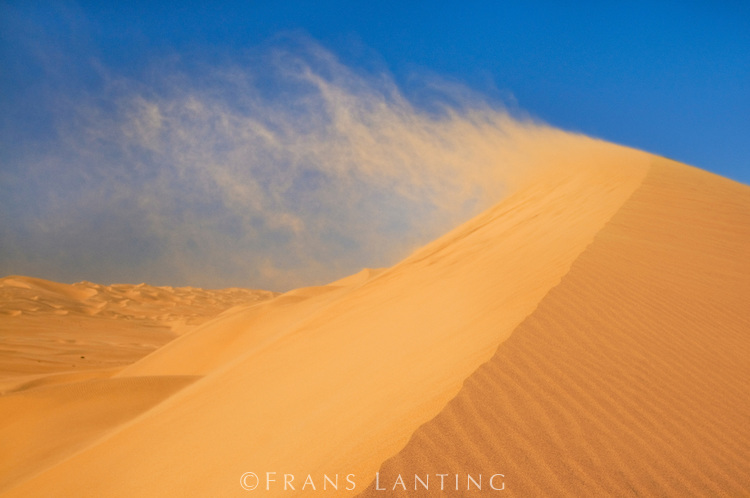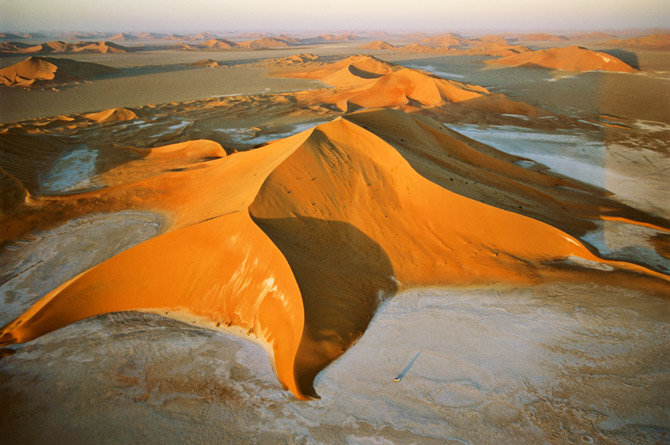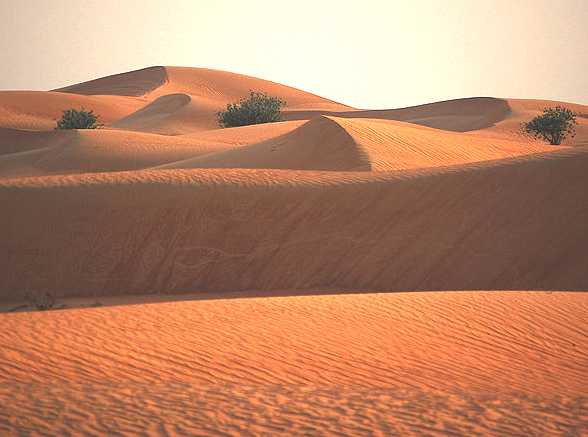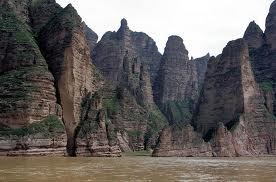How Wind Causes Erosion
Deflation
|
Deflation is a process where wind removes surface materials. Deflation is the main way wind causes erosion. When wind blows over the land it picks up small particles of sediment. This sediment is made of pieces of silt and clay. The stronger the wind, the bigger the sediment it can carry. Sediment such as sand bounces and rolls along the ground because it is too heavy to be picked up.
|
Wind Deposition
Sand Dunes
|
When the wind hits an obstacle it can create a sand dune. Sand dunes can be found on beaches and deserts where there are fine sediments. Sand dunes can be many different shapes and sizes. Some sand dunes can be long and have parallel ridges and others can be shaped as an U. Some sand dunes can be 500 meters tall. Slowly, sand shifts with the wind from one side of the dune to the other, making the sand dune move. Sometimes, plants can grow on a sand dune and anchor the sand in place.
|
